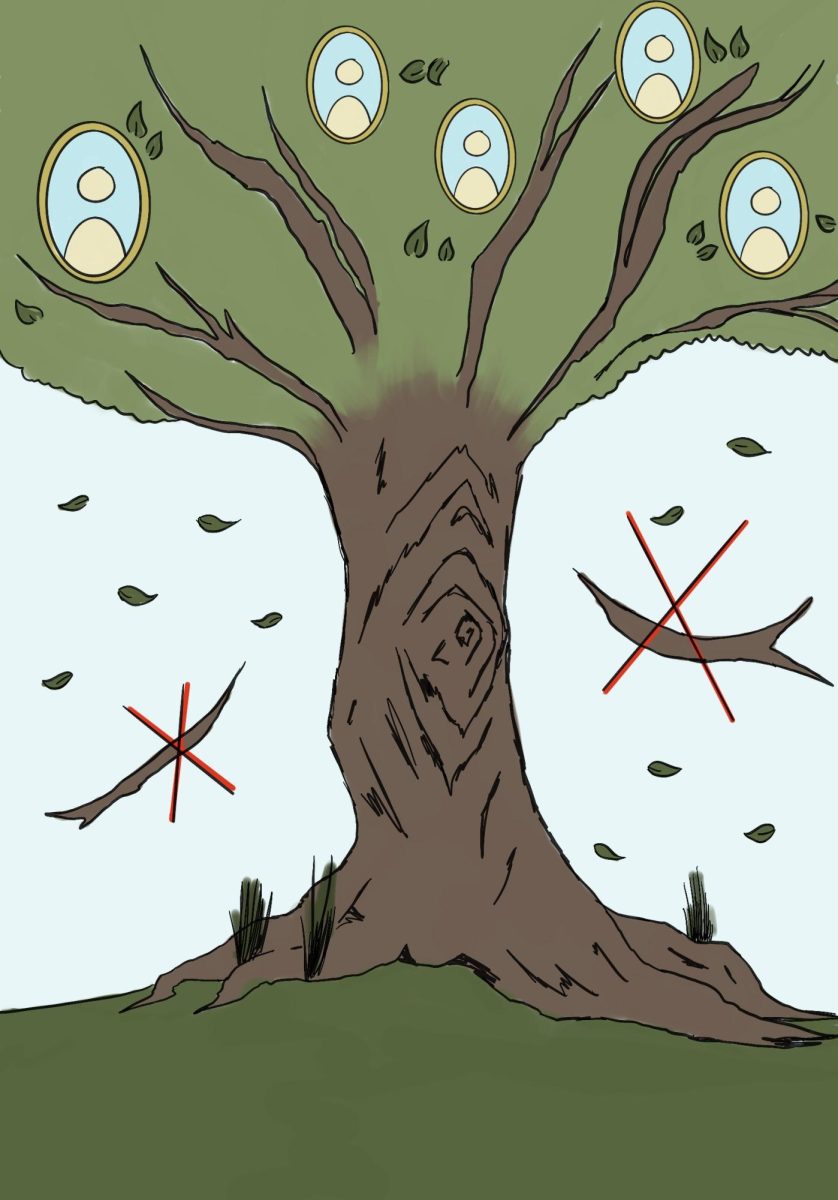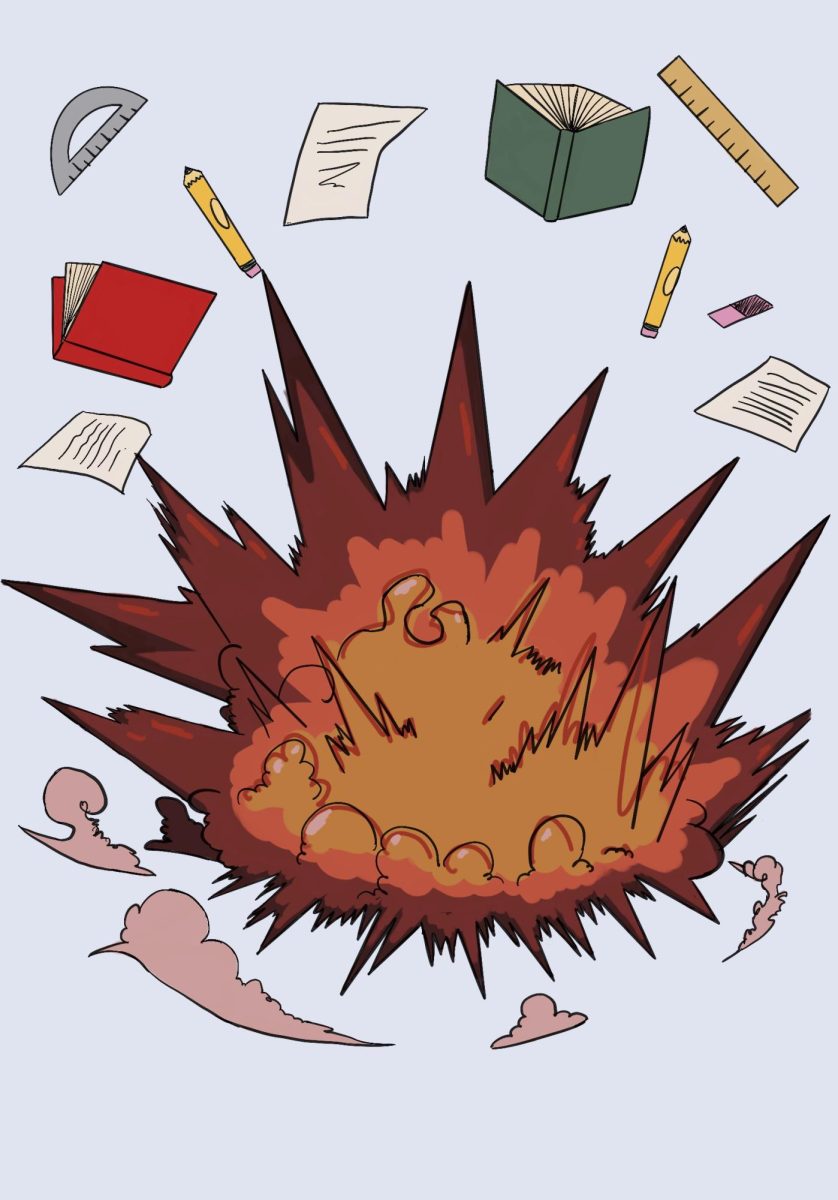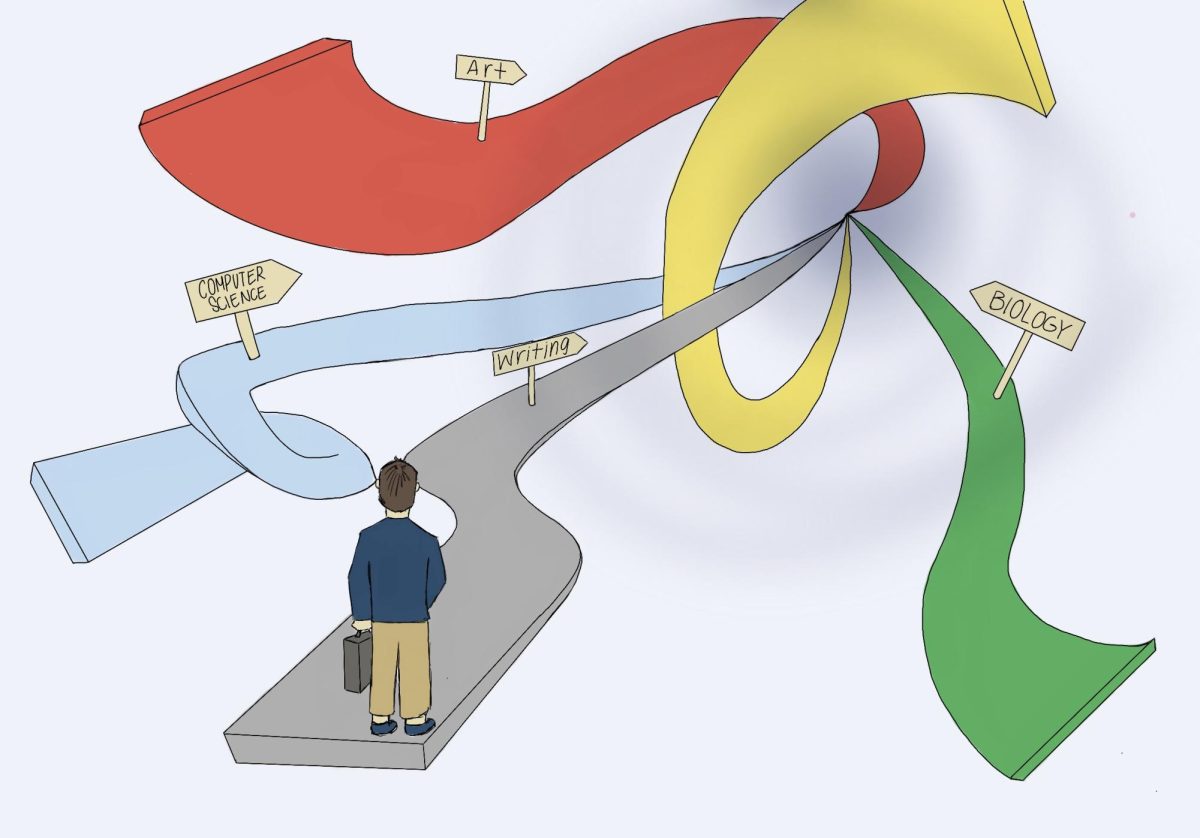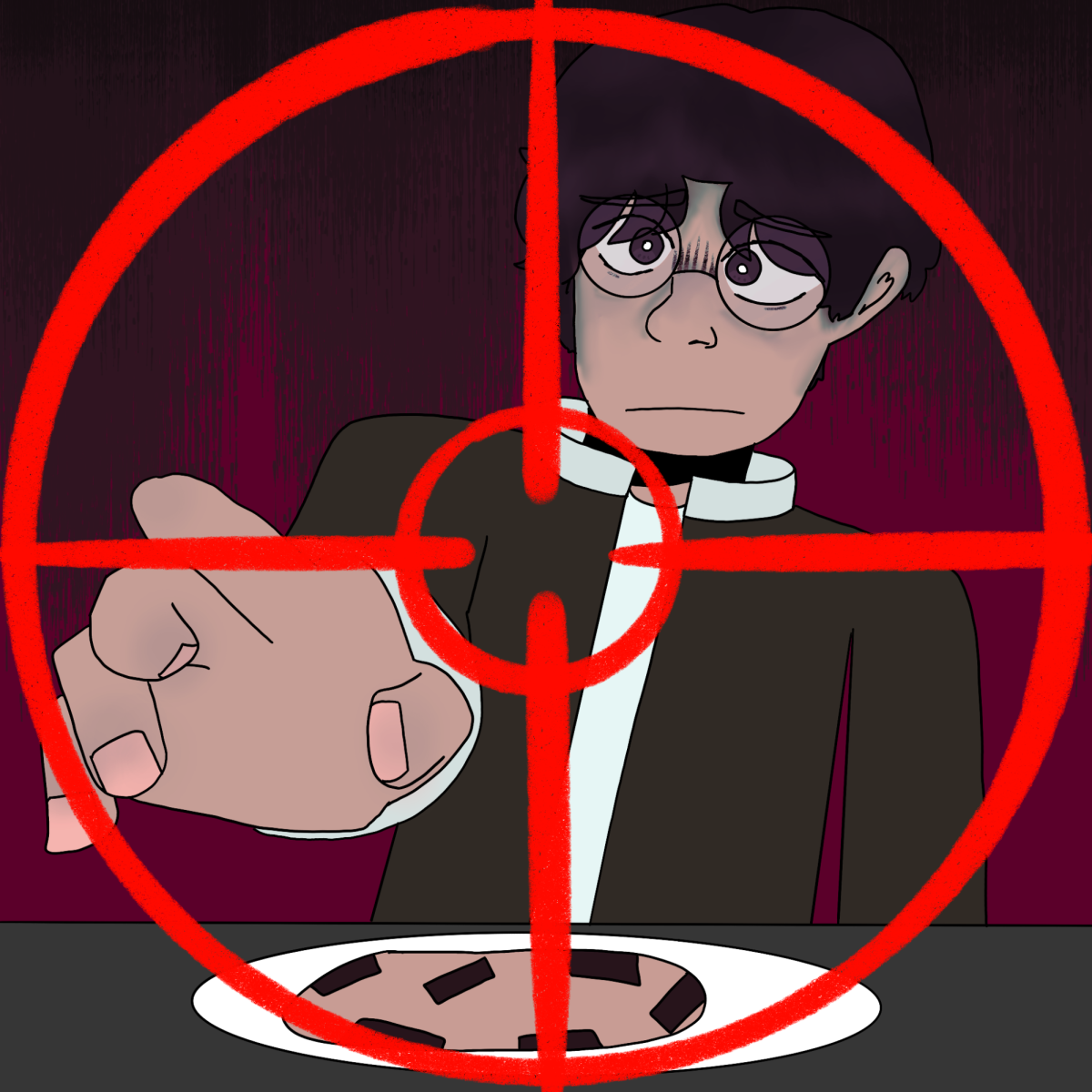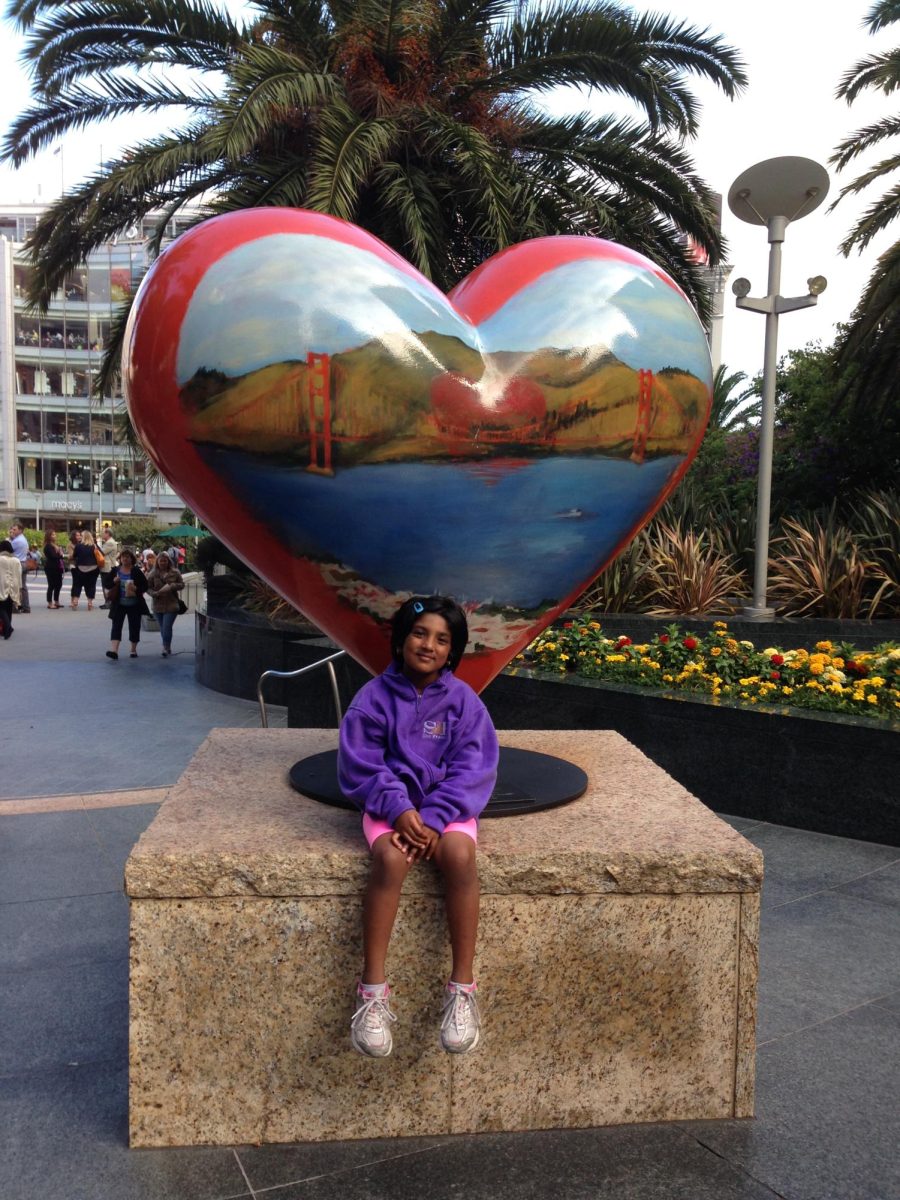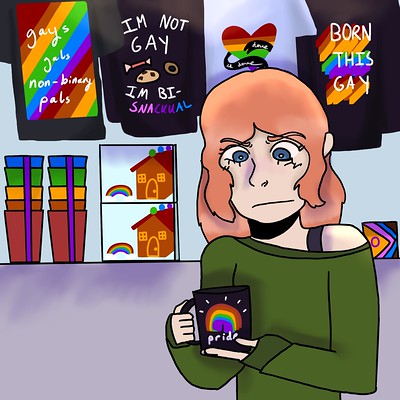
During the 2025 National Day of Silence, I made it a point to speak more. And as I saw stands outside of classrooms decked out in rainbow flags and rainbow bracelets and tiny rainbow stuffed toys wearing even tinier rainbows, I went out of my way to avoid them. It’s the same thing I did during my last Pride Month as well, and it’s what I plan on doing when June rolls around again this year.
Not out of malicious intent, or an intolerance for what pride events stand for. Rather, it’s the opposite: I avoid them out of an outrage for the queer community, because the way that Pride Month and other LGBTQ+ observances are currently being celebrated does more harm than good for the very groups they’re supposed to be uplifting.
Occasions like Pride Month are intended to be inclusive, inspiring events — a celebration of queer joy so unashamed that it is inherently an act of protest in a world that pushes shame as the status quo. But somewhere along the line, they have become a tool of lukewarm, surface-level activism at best and thinly veiled homophobia at worst.
The common perception of Pride Month currently places a disproportionate focus on what can be dubbed the “palatable” gay person: white and cisgender. Whether it is mainstream pride lines rarely displaying trans models or people of color, a 2015 movie titled “Stonewall” inaccurately depicting a white gay man throwing the first brick at the famous riots, or movements like “LGB without the T” coming on the rise, our interpretation of Pride Month ignores intersectionality and makes a mockery of the true diversity of the LGBTQ+ movement.
It fails to consider the fact that it is trans activists of color like Sylvia Rivera, founder of the Gay Liberation Front, or Marsha P. Johnson, a key figure of the Stonewall Riot, who made modern pride celebrations possible in the first place. It actively excludes members of other marginalized communities from queer discussions. And as little as we’d like to admit it, performatively slapping the “inclusive” trans and BIPOC triangle onto pride flags does nothing to prevent the demeaning of thousands of queer individuals during a month that is supposed to do the opposite.
What those who ignore intersectionality don’t recognize is that excluding members of their own community for the sake of “marketability” weakens the movement as a whole. Sure, for now, it’s just the Trump administration removing mentions of transgender people from government websites. But if we leave the issues of more vulnerable queer groups unchecked, intolerance won’t stay contained. At the end of the day, most bigots will not limit themselves to hating a single letter of the acronym — if the community doesn’t stand together, any part of it could be next.
This focus on queer marketability also leaves room for corporate exploitation; Pride Month has turned into a tool for large corporations to make a quick buck without truly caring about the people they are allegedly advocating for. The second the clock strikes June 1st, brands put pride flags on their profile photos and roll out their inclusive merch — with Burger King even trying to wrap its Whoppers in rainbow paper a couple of years ago.
But it’s impossible to look around at this demonstration of outward allyship without asking: Are queer people benefitting from this? Are the proceeds from these demonstrations going towards LGBTQ+ movements? Is any change being made? More often than not, the answer is no. Pride month’s corporate focus is hollow. It’s performative. And it’s nothing to be proud about.
This type of performative activism isn’t limited to just Pride Month. Even events like the Day of Silence, especially in areas like DVHS, are more of an act of pandering than an actual form of protest that will manifest in tangible change. Widely supported demonstrations like these lack a major mechanism of protest: fostering discomfort. From protesting the shame that society pushes onto queer people, to the legislative forms of intolerance being rolled out under this current administration, or — in the case of the Day of Silence — the bullying of LGBTQ+ students, protest is supposed to evoke unpleasant emotions. Because if fighting oppression made everyone comfortable, a fight isn’t truly taking place.
Unfortunately, staying silent for a single school day and then going back to normal within eight hours does not create much discomfort in this school. Instead of speaking up in a way that draws attention or sparks conversation, we are let off with a condescending pat on the back that says “Good job, you had your day of protest. Now let’s get back to our regularly scheduled ignorance” (Which isn’t that dissimilar from how the world falls back into neglecting queer voices once the thirty days of pride month are over).
Of course, it’s a well-intentioned effort, and activism like this often feels like all that we have the ability to do. But demonstrations like these should be utilized as an entry into activism that is supplemented by more powerful movements, rather than standing alone as one of our only displays of outrage against discrimination.
Neither a day nor a month that celebrates queer identities is inherently a bad idea, and I’m in no way saying that we shouldn’t take time to be proud of who we are. In fact, be as proud as you can. Be loud and visible and scream about your identity until your throat is sore. But do it in a way that works — a way that includes all members of such a large community, focuses on the people rather than monetary gain, and isn’t performative.
Wouldn’t that be something to be proud of?

